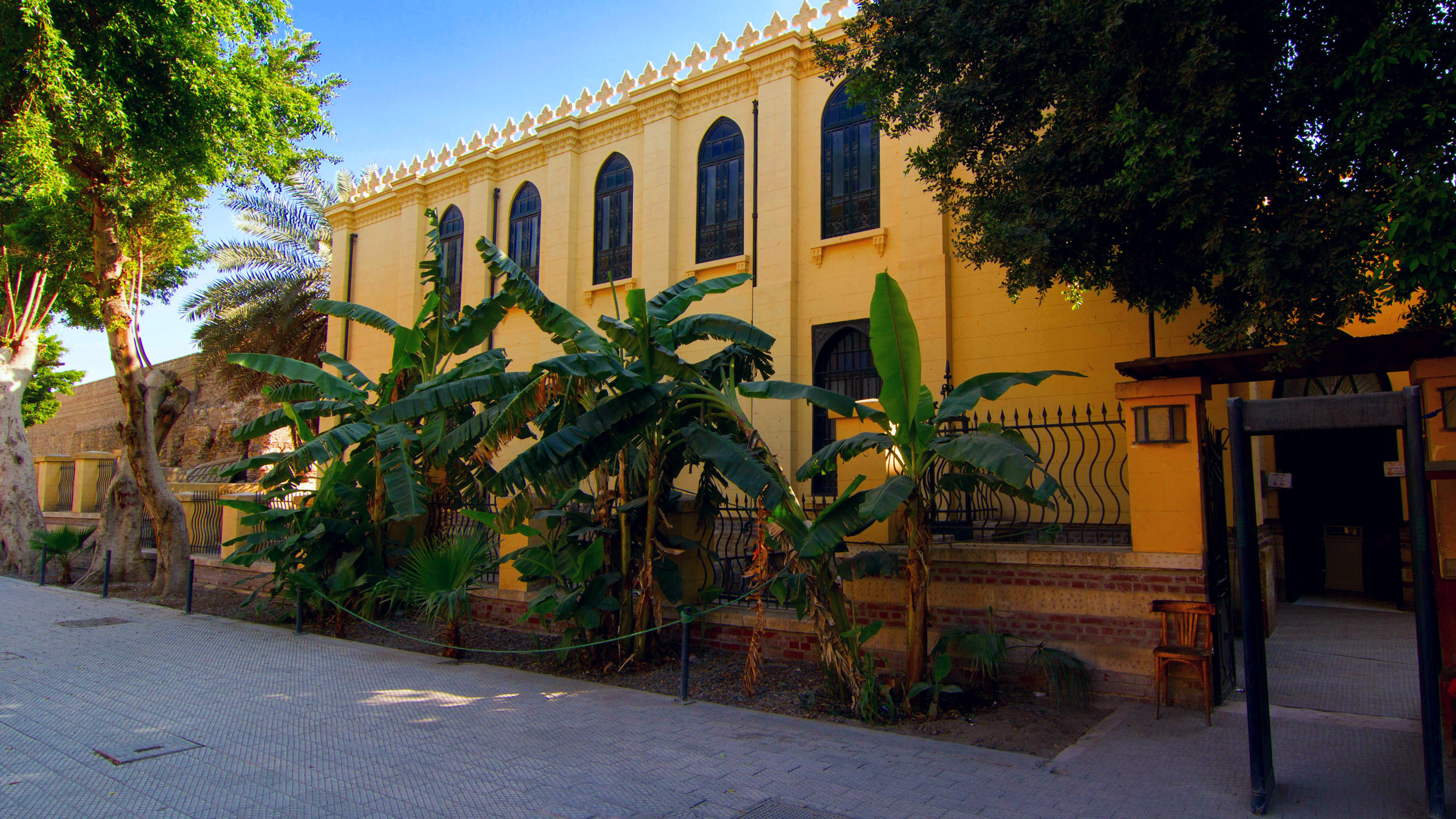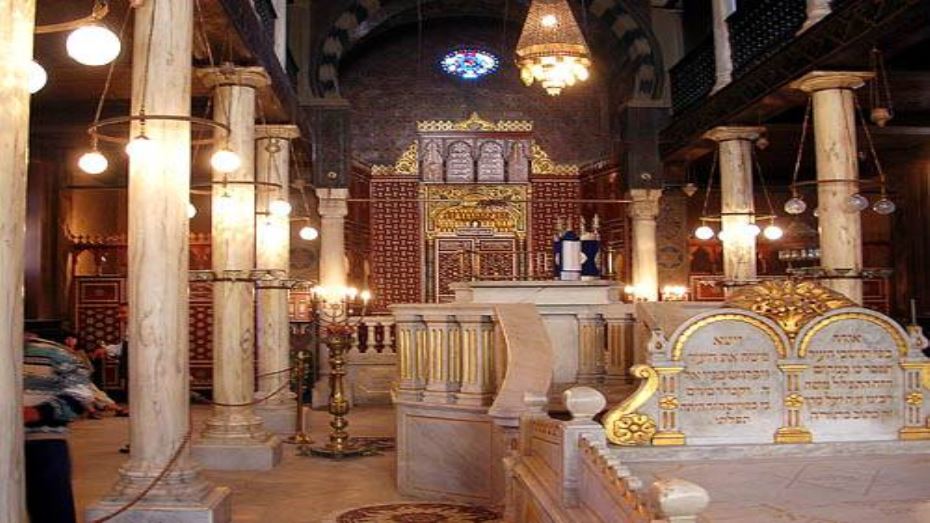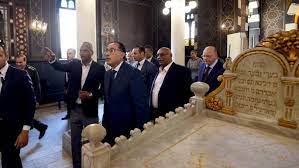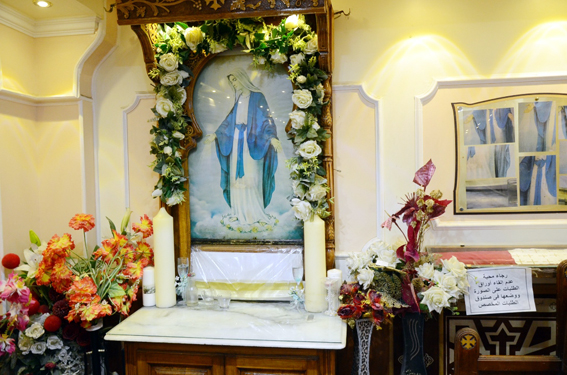A number of newly renovated heritage sites in Old Cairo have been opened by Prime Minister Mostafa Madbouly. Old Cairo, also called Coptic Cairo, is the part of Cairo that goes back to Roman, Coptic, and early Islamic eras. It is famous for its numerous fourth and fifth century churches which today remain thriving places of Christian worship. Old Cairo also boasts the Ben Ezra Synagogue and the Amr Ibn al-Aas mosque, the first mosque to be built in Egypt.
Accompanying Prime Minister Madbouly were Cairo Governor Khaled Abdel-Aal; Minister of Local Development Hisham Amna; and Minister of Tourism and Antiquities Ahmed Issa, also a number of senior government officials in the antiquities and local development field.

Cairo aqueduct
Among the newly renovated sites opened by PM Madbouly is the water intake tower of the 14th-century Cairo aqueduct known as Migral-Oyoun. The aqueduct was built to carry the Nile waters up from the river to Saladin Citadel which was built in the 12th century on Muqattam Hill southeast Cairo. Before the aqueduct was built, the Citadel’s water supply had come from the well known as Bir Youssef.

Today, much of the imposing aqueduct structure remains intact, including the water intake tower where water was lifted some 10 metres high through waterwheels operated by oxen. The aqueduct itself is an archway that was built highest at the water intake spot on the eastern bank of the Nile, and increasingly lower until it reaches the Citadel on top of the hill, running through a 3km-path.
Roman Fort
Further south to the aqueduct lies the Roman Fort of Babylon, which was built in 30BC by the Emperor Augustus once the Romans had defeated Mark Anthony and Egypt’s Queen Cleopatra in 32BC and Egypt became part of the Roman Empire.


The PM listened to a brief on the history of the Fort by Antiquities Minister Ahmed Issa. Mr Issa explained that the recent renovation was the first phase of a full renovation project, and involved the southern part of the Fort, the only surviving part. This part is located underneath the 5th-century Hanging Church, and is famous as the Gateway of Amr since it is the spot through which Amr Ibn al-Aas, the Islamic military leader who conquered the Romans in Egypt in the 7th AD century, entered what is today Cairo.
The renovation, Mr Issa explained, included meticulous cleaning of the external and internal façade of the Fort, treatment of the walls and restoration of the parts that had fallen out, and coating the windows with the help of Supreme Council of Antiquities. A lighting system was installed to highlight the aesthetic value of the Fort, and several tourist services were established.

Mr Issa talked of the Fort’s history, saying that its enclosure today houses six Coptic churches and a convent, the Coptic Museum, and a synagogue.
The Prime Minister remarked that the neighbourhood is a veritable conglomerate of the three heavenly religions: Judaism, Christianity, and Islam; in addition to the Roman Fort itself. He said that work is underway on a great new addition in the area: a 500-feddan (one feddan is 4,200 square metres) park, Fustat Gardens, which will be Cairo’s central park. Fustat is the name given to the area by the Muslim conquerors in the 7th century.
Hanging Church
Once he left the Babylon Fort, PM Madbouly visited the 5th-century Hanging Church. He was received by Anba Yulius, Coptic Orthodox Bishop-General of Old Cairo, who treated the PM to a guided tour through the church. Anba Yulius explained that the church, which is dedicated to the Holy Virgin Mary, was built on two of the towers of Babylon Fort, hence its name, the “Hanging” church.

Mr Madbouly wrote a word in the church’s guest book: “Today, I had the honour to visit the Hanging Church, a holy place beloved by all Egyptians. I ask Allah for perpetual success and growth to all who are in charge of this historical edifice.”


Painstaking renovation
Unquestionably though, the highlight of the PM’s activities that day was the opening of Ben Ezra Synagogue, one of the oldest in Egypt. Legend has it that it was built on the site where Moses was found by Pharaoh’s daughter, but today the river is not close by, and the synagogue is reached through the web of alleyways of Old Cairo.

Mr Issa said that Ben Ezra synagogue had undergone painstaking architectural restoration, also works to treat and safeguard its roof which then underwent state-of-the-art insulation. Its stones were cleaned and treated, its lighting system maintained, its brass and iron works cleaned and polished, and its old ornamentation and library restored. The site around the synagogue was spruced up to ensure an aesthetic view of the building.

Ben Ezra Synagogue
The Ben Ezra Synagogue is believed to date back to 882 before which it was a church which the Coptic patriarch sold to the Jewish community in order to pay the exorbitant taxes demanded of the Church by the Islamic-era rulers. It is named for the prominent Jewish scholar Abraham Ibn Ezra.
The building was ordered torn down around 1012, but was rebuilt a few decades later. Over the centuries, it suffered a number of fires and was restored several times.

The present synagogue was built in the 1890s, and constitutes a rectangular building 3,500sq.m in area, with a plain non-ornamented façade. In the back yard lies a well the water of which was used for purification purposes, Mr Issa said.
The interior is in basilica style composed of three halls, the middle being the largest and tallest, and is surmounted by an octagonal dome.

Amid marble columns, the first floor houses the men’s section and, on its eastern wall, the sanctuary. This is where the Torah case, finely crafted of wood inlaid with mother of pearl and ivory, is located.

A few steps lead up to the marble pulpit, the bimah, which lies at the centre of the synagogue. Ben Ezra contains a marble-clad mastaba platform carved with gilded texts, including a reference to Moses. The floor is paved with square stone tiles; on the ceiling and walls are marvellous frescoes with arabesque designs and coloured geometric patterns.

The upper level is reserved for women and overlooks the prayer area. It is reached by a wooden staircase in the courtyard. Ten marble pillars support the gallery’s ceiling and stone arches, which are alternately painted black and white. On its north side, the famed “Cairo Geniza” was discovered, a treasure trove of Jewish communal documents, which was sealed and could only be reached through an aperture in its roof.

The Cairo Geniza
“Geniza” is a Hebrew term that generally refers to a collection of documents that are stored and buried rather than thrown away, owing to their holy status since the name of God is mentioned in them.
The Cairo Geniza documents were discovered in 1896 by Jewish scholar Solomon Schechter, who climbed a rickety ladder into an attic-like opening behind a wall in the synagogue’s upper-floor women’s section and discovered close to ten centuries’ worth of the Jewish community’s detritus: hundreds of thousands of items. They included legal disputes, engagement agreements, day wage payments to janitors, fragments of various ancient books, records of foreign trade from around the region and into India and China, thousands of personal letters and even testimony about various atrocities during the time of the Crusades.

In the more than 100 years that have followed, historians have poured over the documents which provided unprecedented insight into the life and activity of the community. The material has since been spread around some 70 institutions and collections around the world, but the biggest part remains at Cambridge.
All Egyptian
Egypt’s Supreme Council of Antiquities said that the restoration “confirms the keenness of the Ministry of Antiquities to develop and restore all archaeological sites: Islamic, Coptic and Jewish, that belong to various historical eras. “They are all Egyptian monuments that warrant protection,” the Ministry said.
In 2020, Egypt reopened the 14th-century Eliyahu Hanavi Synagogue in Alexandria, following a three-year, multi-million-dollar restoration.
Ben Ezra Synagogue is one of no more than five synagogues that remain in Egypt after many Jews left the country following the 1948 Palestine War and the 1956 Suez War.
Egypt’s Jewish community is at the end of a dramatic decline, from about 80,000 people in the 1920s to almost a handful of Egyptian ancestry now residing in Cairo.
Accordingly, the Ben Ezra Synagogue today functions as a museum rather than a functioning worship place.
Watani International
4 September 2023
















